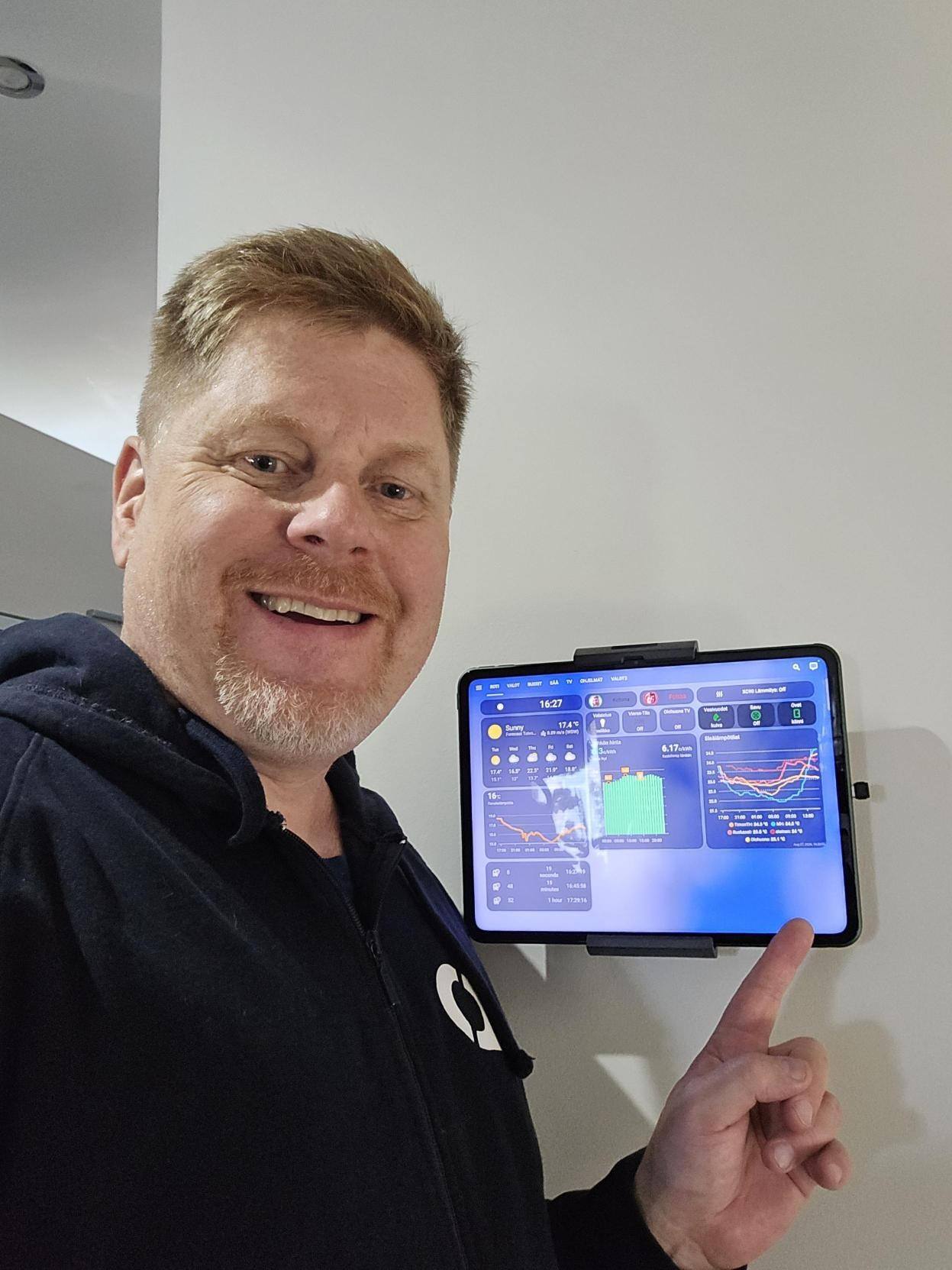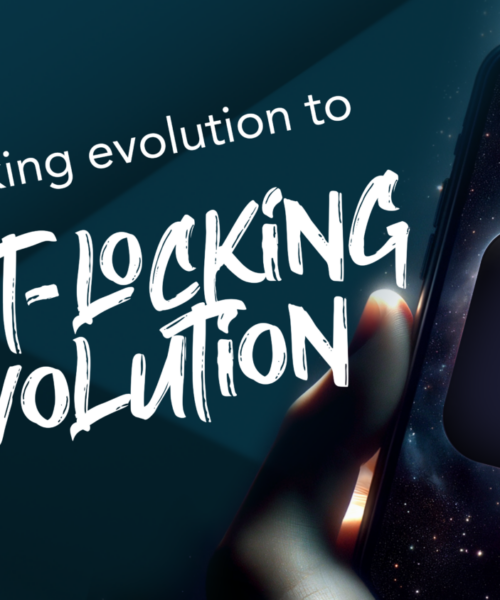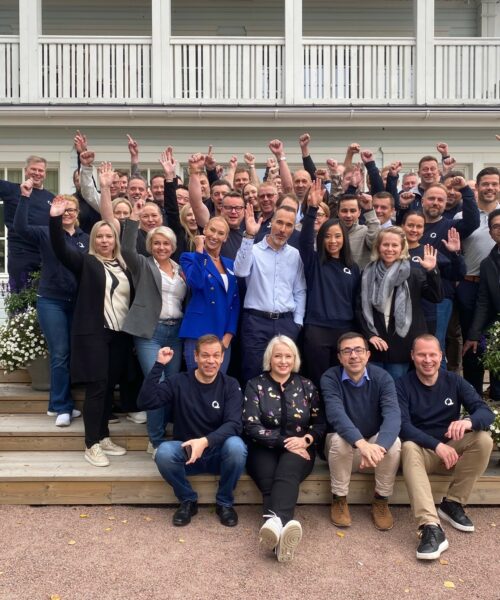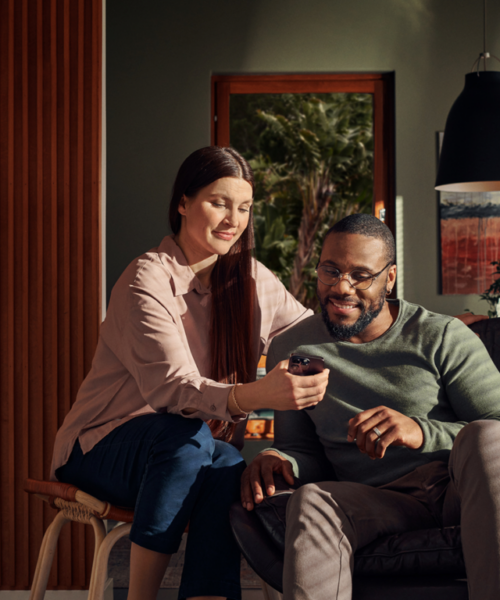A passion for smart solutions at work and at home

As we mentioned in our recent blog post, over the next year we will be bringing you a series of articles that show the importance of digital solutions in today’s smart cities. This time, we give you a sneak peak into the very smart home-automation solution of one of the members of the iLOQ family.
iLOQ’s Chief Technology Officer, Timo Ainali, doesn’t just talk the talk, he well and truly walks the walk. His home, an apartment in Toivoniemi – a small man-made island in a river next to the city center of the technology hub of Finland – Oulu – contains an automation system that features more than 100 devices.
As CTO, Timo’s role is to manage iLOQ’s technical operations. He oversees and supervises research and development and serves as a technical advisor to, for example, our CEO, Heikki Hiltunen. Timo is a key player in the ongoing development of our ground-breaking, battery-free, smart solutions. And his passion at work is matched by his enthusiasm for creating the smart and sustainable living environment in his home.
You might be thinking that this kind of automation system would only be feasible in a newly built, state-of-the-art premises. But Timo’s apartment is within a house originally built in 1951 in an area planned by the pioneer in Finnish architecture, Alvar Aalto.
100+ smart solutions
Timo is a self-confessed ‘technology nerd’ and has built many audio, media and electronics systems. He started to experiment with home automation about 15 years ago in a bid to remotely control the heating for his cottage in Finnish Lapland so that it would be warm when the family arrived for weekend trips.
In his city apartment, automation is currently controlling the lighting, heating and ventilation systems. Lighting is controlled based on presence and no manual switches are needed. When someone enters a room, the lights automatically turn on. When the room is empty, they switch off. The amount of daylight is also taken into account. If there is enough daylight, the electric lights are not activated. The solution also has an ambience feature. For example, the lighting is dimmed if the family is watching a movie. In the mornings, the lighting is brighter and ‘colder’ while, in the evenings, it is warmer and softer.
The heating and ventilation systems are controlled by presence, time, temperature and humidity. When no-one is home, the temperature is reduced to save energy. The temperature in the bedrooms can be lowered at night to ensure a good night’s sleep but increased in the morning for a comfortable wake-up. And ventilation is given a boost when an increase in humidity is detected, for example, if someone is taking a shower or laundry is being dried. And, of course, the Finns ‘holy’ place – the sauna – is an integral part of Timo’s automation solution. He gets a notification to his mobile phone when it has reached the optimum temperature, lighting is set for a relaxing mood and the ventilation is adjusted accordingly.
How about security?
Timo’s locking system is also an integral part of the solution. All doors (to the stairway and balconies) are equipped with door sensors. He receives an alert if a door has been left open when he leaves the house or if a door is opened when he knows nobody is at home. For added convenience, he can even remotely open a lock, for example, for home deliveries. Camera or video surveillance can be turned on automatically when a door is opened to ensure security.
How it’s all controlled
Timo has a dedicated server on a small PC that acts as a central hub for all devices. The server runs an open-source home automation platform – Home Assistant – that offers hundreds of integrations with various devices. He prefers this to using one of the many commercial platforms that may typically offer an easier and faster way to get started but are limited in terms of functionality and interoperability between devices from different vendors. It can be controlled remotely either via a web browser or a dedicated mobile app.
All Timo’s devices are connected to the central hub. Various technologies can be used for communication, such as WiFi, Bluetooth, Zigbee and Z-Wave. The hub routes all messages so they can be used in parallel and independently from each other.
The devices regularly update their status to the hub which in turn sends messages to the devices to adjust settings accordingly. Timo can define the rules inside the hub, for example, to turn up the ventilation if humidity exceeds 35%. These rules can be enriched with additional information from the internet, such as energy prices or the weather.
The main dashboard of the system is visible in a tablet mounted on the wall in the hallway. It gives a quick overall view of the most used functions and alarms. The same view is available anytime and anywhere from the app or web browser. The tablet also shows bus timetables so Timo can plan his route to the office. And, if he decides to take his car, he can also switch on the car’s pre-heating function.
What are the main benefits?
The automation solution has enabled a reduction in energy consumption of about 30%. But Timo considers the main benefits to be the increased ease and comfort of living. He feels secure in the knowledge that he will be notified if there is a water leak, if a door is left open or if a smoke alarm goes off no matter where he is in the world and he can take immediate and appropriate action to solve the situation.
“I am constantly expanding and improving the system. Home Assistant receives updates every month with new features and possibilities that can be utilized. A good system should be reliable, unnoticeable and work seamlessly in the background for all family members – this is my target. And new technologies like AI and speech control offer a lot of possibilities that I am excited to explore,” states Timo Ainali.
We will let you know more updates from Timo as he adds to his super-smart solution.




















